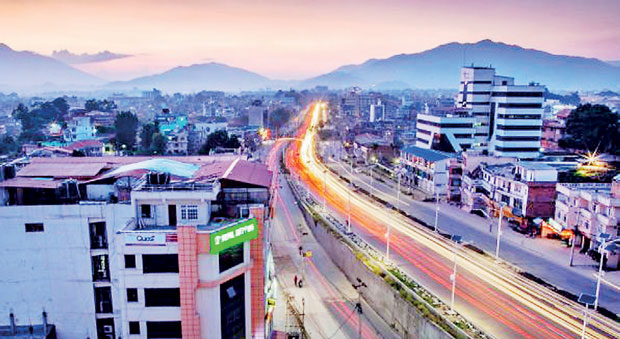04 Oct 2017 - {{hitsCtrl.values.hits}}
 Municipal and urban governments in developing Asia face a huge financing gap to deliver high-quality urban infrastructure
Municipal and urban governments in developing Asia face a huge financing gap to deliver high-quality urban infrastructure
 In Asia, dealing with urbanization is an especially acute challenge. Urban infrastructure systems are bursting at the seams, struggling to meet the needs of growing population.
In Asia, dealing with urbanization is an especially acute challenge. Urban infrastructure systems are bursting at the seams, struggling to meet the needs of growing population.
The quality of infrastructure is probably the single most important factor in determining whether cities can attract and retain investment and high-quality workforces. But many municipal governments in developing Asia and the Pacific lack the institutional or financial capacity to build and upgrade key infrastructure.
For most urban areas in Asia-Pacific, the public sector remains the predominant source of infrastructure finance, but is constrained by its overall fiscal position. This leads to capital starvation of projects that could otherwise be financially viable in the long term.
The problem is further compounded by weakness in the overall credit quality of most urban local governments, which significantly limits private sector participation in the delivery of urban services. Commercial banks mostly offer only short-term maturities, while debt through domestic capital markets has not been used on a significant scale by most countries.
So, what can cities do to attract more private sector infrastructure investment?
There is more than enough capital available. The bigger challenge is to effectively harness it to cities in developing Asia-Pacific. There are several specific steps that municipal governments can take to attract private sector participation in urban infrastructure.
1. Ensure robust project preparation and pipeline development.
Irrespective of how an infrastructure asset is procured, proper project preparation is the key to a programmatic infrastructure delivery. This means defined, predictable governance and legal processes that provide investors with confidence and visibility.
2. Improve the enabling environment.
Broad areas include appropriate sectoral policies, public sector commitment and leadership, ability to understand key project risks and its management and public sector capacity to prepare, procure and manage public-private partnership (PPP) projects.
3. Tap into domestic capital markets.
This is the most critical avenue for sustained financing of urban infrastructure that generates cash flows in local currency. Accessing private domestic savings on a large scale will augment efforts of governments and international funding agencies to finance infrastructure at local and regional levels.
4. Back-stop payment obligations through multilateral financial institutions.
Multilateral financing could help pay for some part of initial capital expenditure of a PPP project on a grant basis to enhance the overall project viability. Multilateral financing can also be used to meet payment obligations—like availability payments—of municipal governments.
5. Use credit enhancement products more creatively.
Multilaterals’ risk mitigation and guarantee products can crowd in private sector financing that leverages the multilateral bank’s credit rating to attract additional financing. Project-specific guarantees allow governments that are keen to attract private financing to obtain cover against the risk of non-payment by a government entity to a private or foreign commercially acting entity under a commercial or financing contract. Similar guarantees are also available to private sponsors.
6. Set up local infrastructure funds that can be ring-fenced to pay for infrastructure.
A local infrastructure fund can bring together different forms of municipal government funding, maximizing their buying power and starting a cycle of capital investment projects. Some municipal governments may use existing resource funding streams (such as from federal/provincial fiscal transfers or municipal tax or property tax base) and borrow against this to get capital works under way. Once the scheme is delivered, net revenues accelerate the repayment of the debt. Since some of the debt is paid down, this revenue provides an even larger stream of resource funding to repeat the process.
The critical part is that the city government needs a stream of resource income to get things started in the first place – to bridge the gap until revenues and other income start flowing.
7. Develop a transparent structure for land value capture.
Land value capture (LVC) is a financing method by which a municipal government activates increases in land/property values usually through regulatory decisions such as change in land use or floor area and infrastructure development. The government then captures part or all of the value appreciation and reinvests the proceeds to finance infrastructure development.
For areas with high development potential municipal governments should consider using the development rights auction model or DRAM, a new land value capture mechanism.
However, for LVC to truly take off in developing Asia, the value generated by a proposed investment (mostly in public transport) must be transparently captured. This is challenging for cities that lack a robust, market-oriented policy framework and tools for assessing LVC.
Municipal and urban governments in developing Asia face a huge financing gap to deliver high-quality urban infrastructure.
The private sector can help close some of these gaps. But city governments need to do their share by creating the right environment.
Given the credit quality of most of these governments, multilateral banks like ADB and international financial institutions can provide significant support in attracting private capital into municipal infrastructure.
(Srinivas Sampath is Technical Advisor, Office of Public-Private Partnership at Asian Development Bank)
06 Jan 2025 45 minute ago
06 Jan 2025 1 hours ago
06 Jan 2025 2 hours ago
06 Jan 2025 2 hours ago
06 Jan 2025 2 hours ago